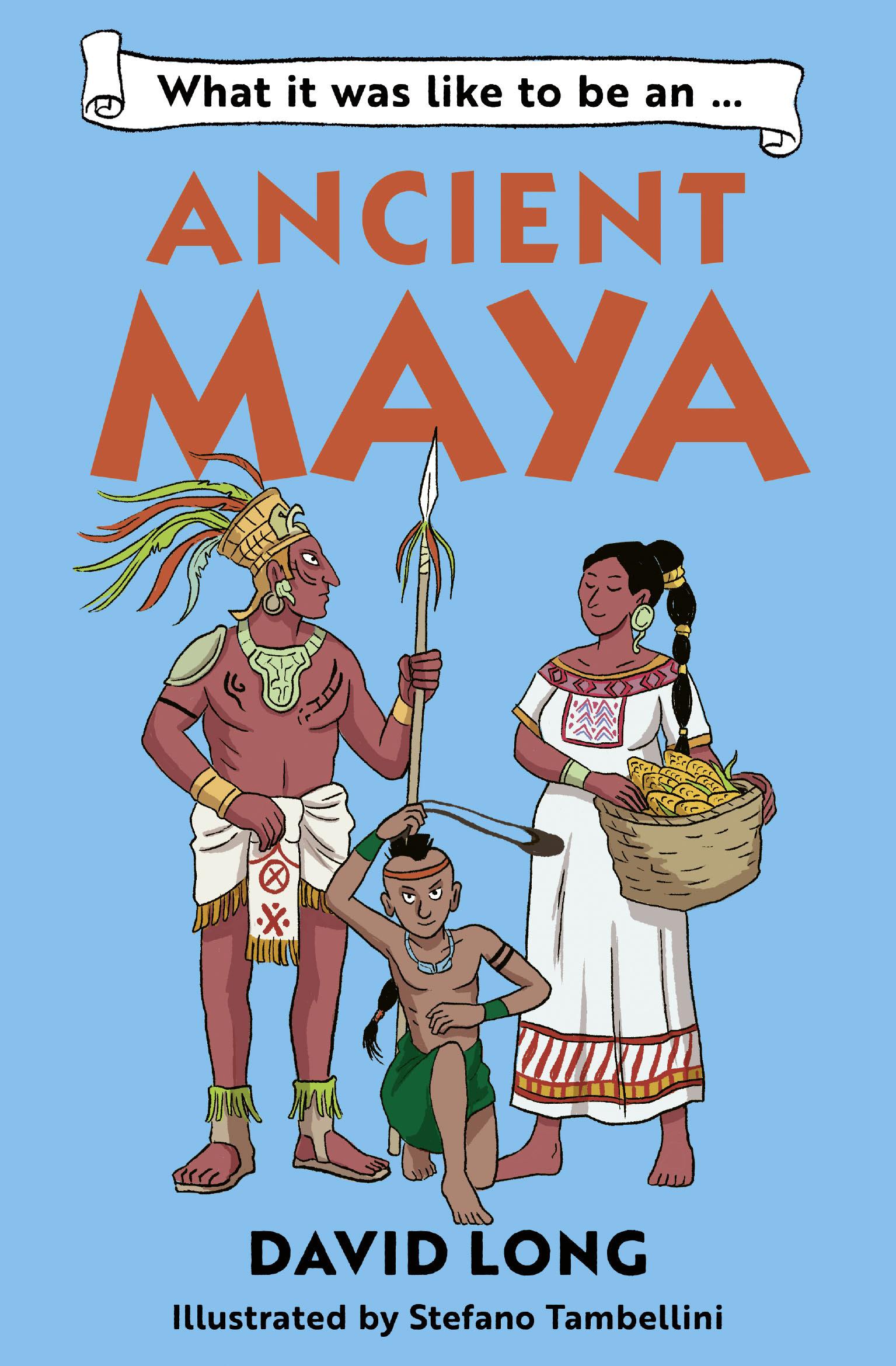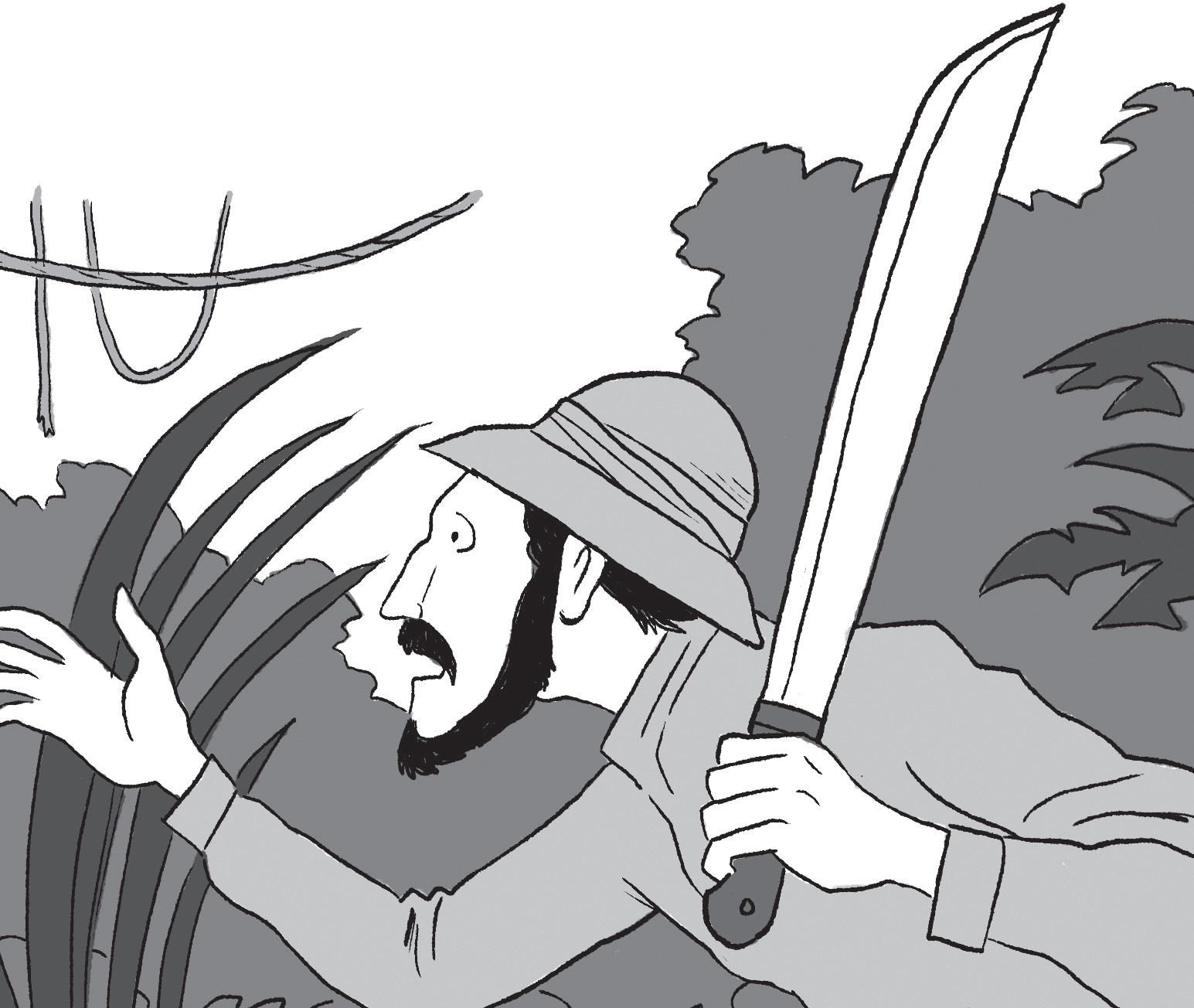


Published by Barrington Stoke
An imprint of HarperCollinsPublishers
Westerhill Road, Bishopbriggs, Glasgow, G64 2QT
www.barringtonstoke.co.uk
HarperCollinsPublishers
Macken House, 39/40 Mayor Street Upper, Dublin 1, DO1 C9W8, Ireland
First published in 2024
Text © 2024 David Long
Illustrations © 2024 Stefano Tambellini
Cover design © 2024 HarperCollinsPublishers Limited
The moral right of David Long and Stefano Tambellini to be identified as the author and illustrator of this work has been asserted in accordance with the Copyright, Designs and Patents Act, 1988
ISBN 978‑1‑80090‑249‑7 10 9 8 7 6 5 4 3 2 1
All rights reserved. No part of this publication may be reproduced, stored in a retrieval system, or transmitted, in whole or in any part in any form or by any means, electronic, mechanical, photocopying, recording or otherwise without the prior permission in writing of the publisher and copyright owners
The contents of this publication are believed correct at the time of printing. Nevertheless the publisher can accept no responsibility for errors or omissions, changes in the detail given or for any expense or loss thereby caused
A catalogue record for this book is available from the British Library
Printed and Bound in the UK using 100% Renewable Electricity at Martins the Printers Ltd

For Emma and Olivia, two princesses from the Americas

CONTENTS 1. AN ANCIENT LOST WORLD 1 Who Were the Mysterious Maya? 2. PALACES AND PYRAMIDS 13 Life in a Maya City 3. AN UNEQUAL SOCIETY 29 The Rich and the Poor 4. HUNTING, FISHING AND FARMING 40 Life in the Rainforest 5. UNRAVELLING THE MYSTERY 52 Writing and Religion 6. THE STARGAZERS 63 Maya Maths and Astronomy 7. A SOPHISTICATED PEOPLE 71 Architects, Engineers and Inventors 8. THE BEGINNING OF THE END 79 The Arrival of the Spanish 9. A LASTING LEGACY 87 The Maya Today
AN ANCIENT LOST WORLD

Who Were the Mysterious Maya?
The ancient Maya people invented chocolate, chewing gum and rubber. They also enjoyed playing Pok‑a‑Tok, which is one of the world’s oldest ball games. The rich and colourful Maya civilisation was based across Central and South America and covered thousands of square kilometres. Historians call this Mesoamerica, and it was home to between 5,000,000 and 10,000,000 Maya people. The Maya existed long before any European explorers had sailed across the Atlantic to reach America.

2 AN ANCIENT LOST WORLD

Their story starts around 2000 bce , when people in Europe were coming to the end of the period known as the Neolithic or New Stone Age.
The first Maya families lived in small villages in the steamy rainforests of the countries that are now called Mexico, Guatemala, Belize, Honduras and El Salvador.
AN ANCIENT LOST WORLD 3
But by 200 ce , the Maya had built dozens of large and often spectacular cities. Many Maya people moved from the villages to live in these cities. Over 40 cities were created in the end, forming the basis of a remarkable and long‑lasting civilisation.
The cities were built around monumental stone structures. These included spectacular palaces, tall pyramids and huge temple complexes decorated with detailed carvings of animals and Maya gods. The largest cities were home to more than 100,000 people.
Archaeologists who have studied their remains have concluded that this was a sophisticated and highly advanced society.
The Maya were clever inventors and engineers as well as highly skilled builders. They didn’t manage to invent their own version of the wheel, but this may only have been because wheels weren’t necessary, as
4 AN ANCIENT LOST WORLD

there were no large animals around that could pull a cart. They did invent many other amazing things. The Maya were the first people in the Americas to learn how to read and write. They had a deep understanding of both astronomy and mathematics. They were also successful farmers, and their artists created many beautiful things made of wood, stone, pottery and paint.

6 AN ANCIENT LOST WORLD
But the Maya also had a much darker side to them. They had some horrible, bloodthirsty traditions, such as making human sacrifices to their gods and eating dogs, and their cities were often at war with each other.
Most of the wars took place because each city was like its own small country. This meant the city governed itself and had its own king (or sometimes a queen) and its own laws.
The people living in the cities shared a common Maya culture and had similar religious beliefs. But they spoke around 30 different languages and refused to come together to form an empire.
The Maya preferred to stay in their own tribes, clans and families instead of becoming a single powerful group. One ruler would declare war on another, and their rival armies fought bloody battles in an attempt to take
AN ANCIENT LOST WORLD 7
prisoners and to steal land and treasure from each other.
These wars were often long and expensive. They also cost many lives, and by the start of the tenth century ce the number of Maya had greatly declined.

8 AN ANCIENT LOST WORLD
Many of their great cities were abandoned and left to become ruins. The reasons for this may have included climate change, but, whatever the cause, Maya society never recovered.
The entire civilisation was already close to dying out in the sixteenth century – and then the region was conquered by Spanish soldiers and explorers known as conquistadors.
These invaders wiped out whole Maya communities. They had no interest in Maya art and culture because the Maya weren’t Christian. Tens of thousands of men, women and children were murdered. Many more were enslaved or died after becoming infected with diseases carried by soldiers and sailors arriving from Europe.
The Maya people were largely forgotten for centuries after this, and they became known as “the mysterious Maya”.
AN ANCIENT LOST WORLD 9
The ruins of once mighty Maya cities disappeared as the plants and trees of the tropical forests grew tall and closed over the city streets and squares.
It’s incredible to think that hardly anyone was interested in the Maya’s history until the mid‑nineteenth century. This was when an American called John Lloyd Stephens set out to explore the region.

10 AN ANCIENT LOST WORLD
He bought more than 24 square kilometres of rainforest and swamp from a local man for just $50. That’s equivalent to about 3,300 football pitches, and Stephens spent years chopping away the dense jungle growth using a handheld blade called a machete. He eventually uncovered many astonishing ruins, but even he had no real idea about the richness of Maya culture or the full extent of their impressive civilisation.

AN ANCIENT LOST WORLD 11
In fact, archaeologists are still making exciting new discoveries about the Maya today, in the twenty‑first century. They have found dozens of grand pyramids and palaces, and even sports stadiums – in total, identifying more than 4,400 Maya sites. The most magnificent of these attract millions of tourists every year, and most experts believe that hundreds more Maya ruins lie hidden in the rainforest waiting to be found.
12 AN ANCIENT LOST WORLD













